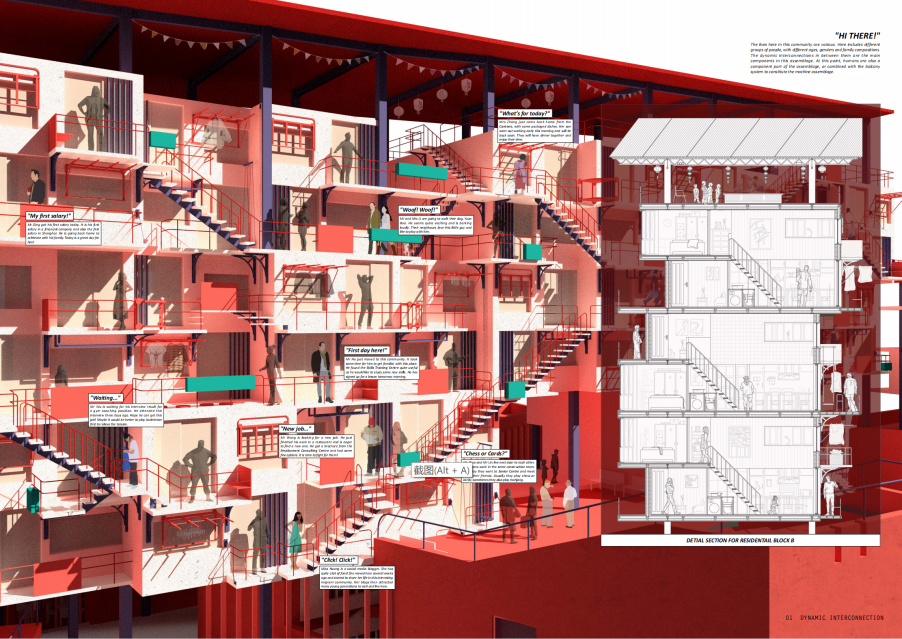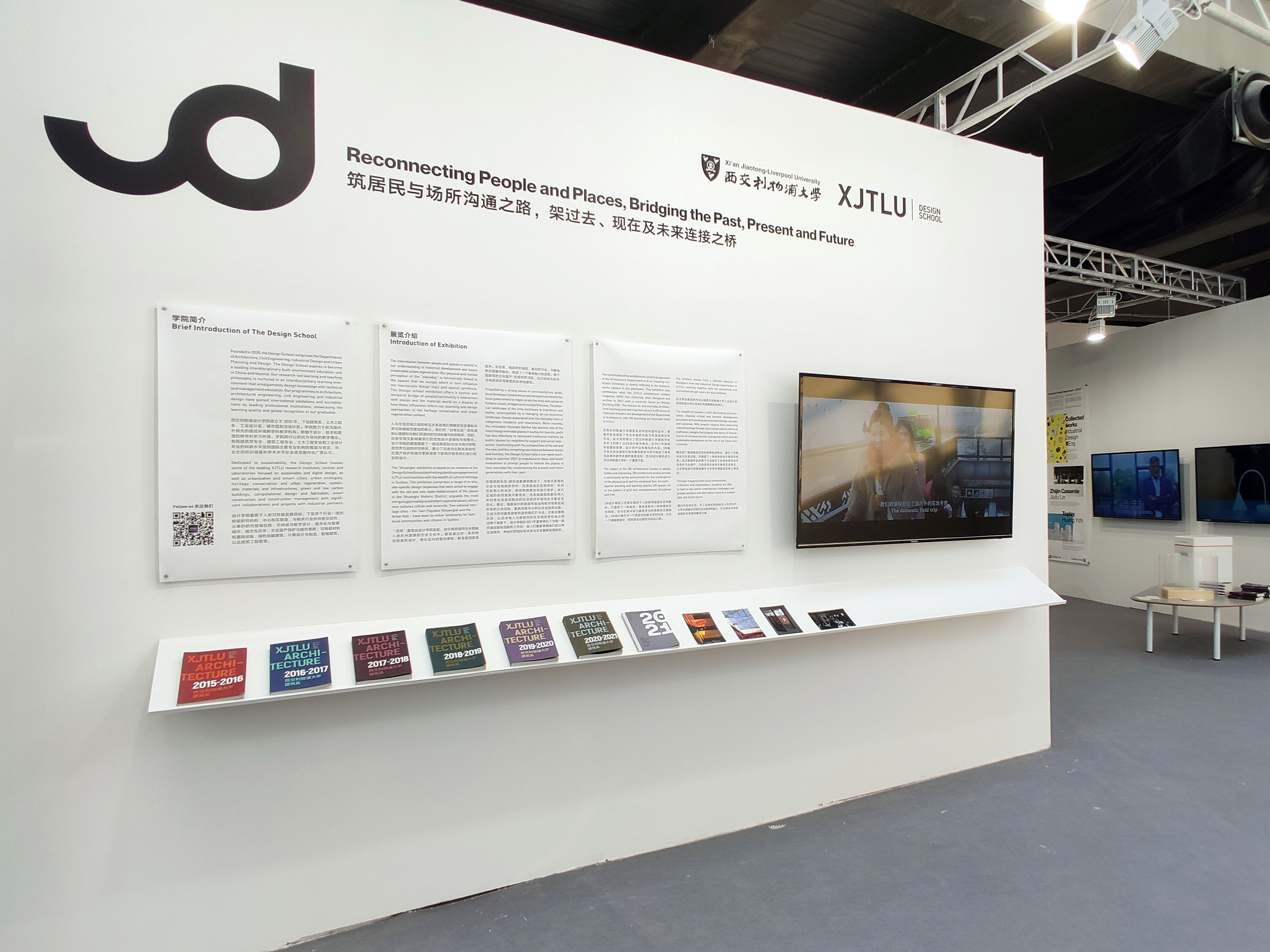The art exhibition 3 Mountains, presented by Kimvi Nguyen from Xi’an Jiaotong-Liverpool University’s Department of Architecture, recently opens on ground floor of Design Building.
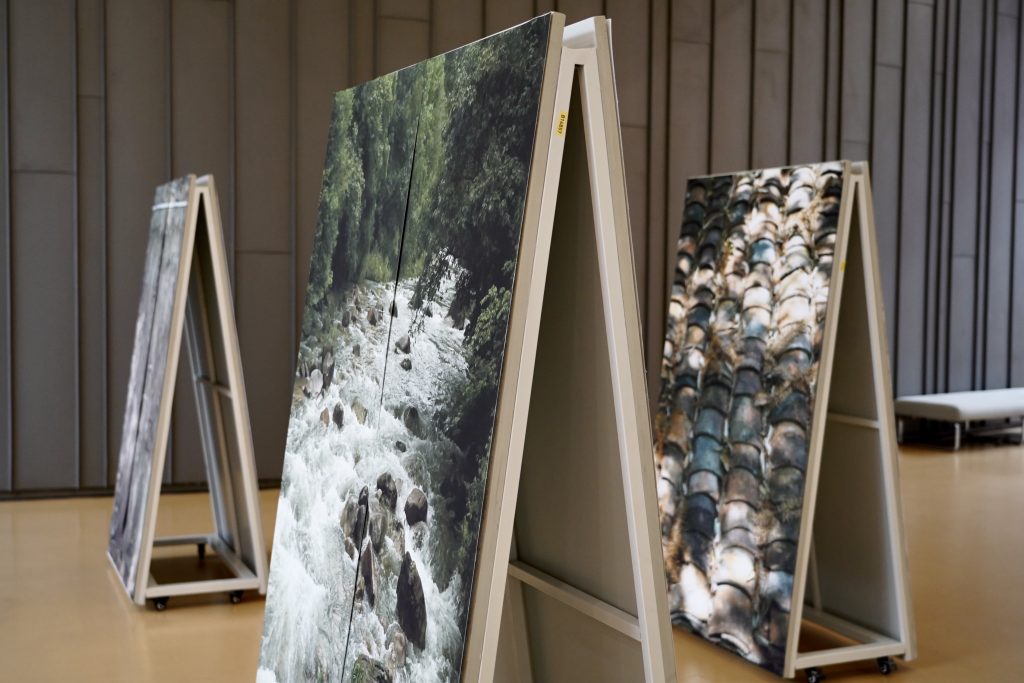
3 Mountains exhibition on campus
The exhibition displays printed images of the structures Kimvi built in the valleys of Qingliang Mountain in Zixi County, Jiangxi province. It is based on her research of vernacular design and performance art in rural China, which is supported by XJTLU and funded by the Lucitopia Residency programme, a project of the wall-less open-air Xi Art Museum in Qingliang Mountain.
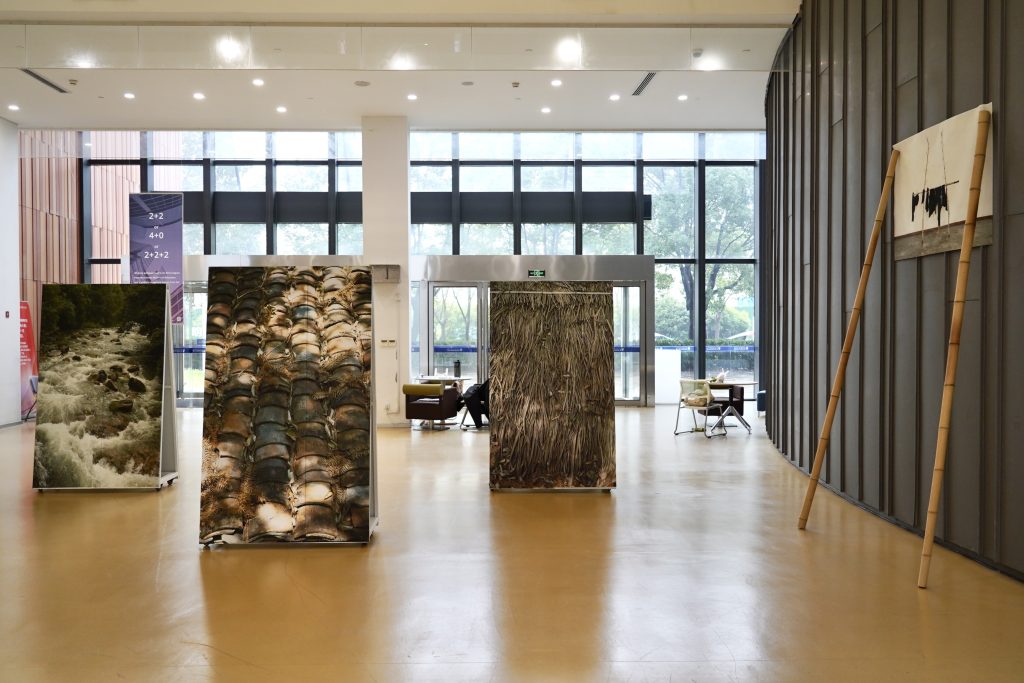
3 Mountains exhibition on campus
Kimvi says the original 3 Mountains structures were composed of only building materials that could be easily obtained nearby, like tiles, wood, stone, bamboo, and grass.
“I wanted to restrict myself to designing simple geometric forms, using sustainable materials from the local environment, and working in harmony with the community.
“The design was inspired by the mountainous landscape of the region and was mainly decided by the function of the structure and the climate of the surrounding area,” she says.
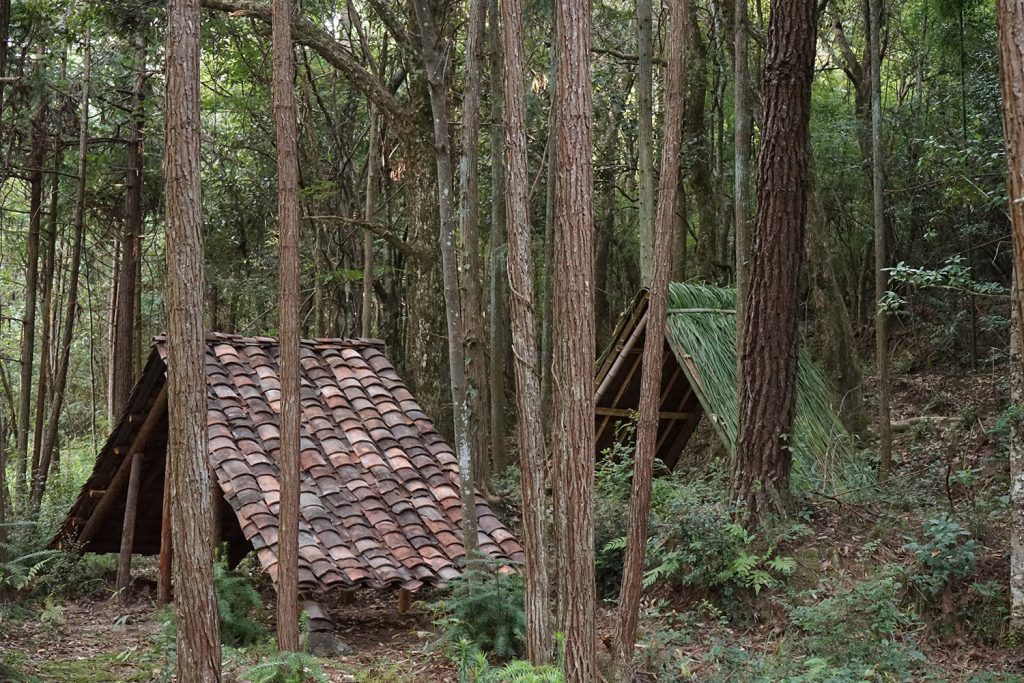
3 Mountains structures in the valleys of Qingliang Mountain
In Mountain Number One, bamboo and grass were the main components of the structure.
“I took inspiration from the remains of a deteriorated bamboo structure in the valley. The grass and bamboo were from a goose and duck enclosure in the village,” Kimvi says.
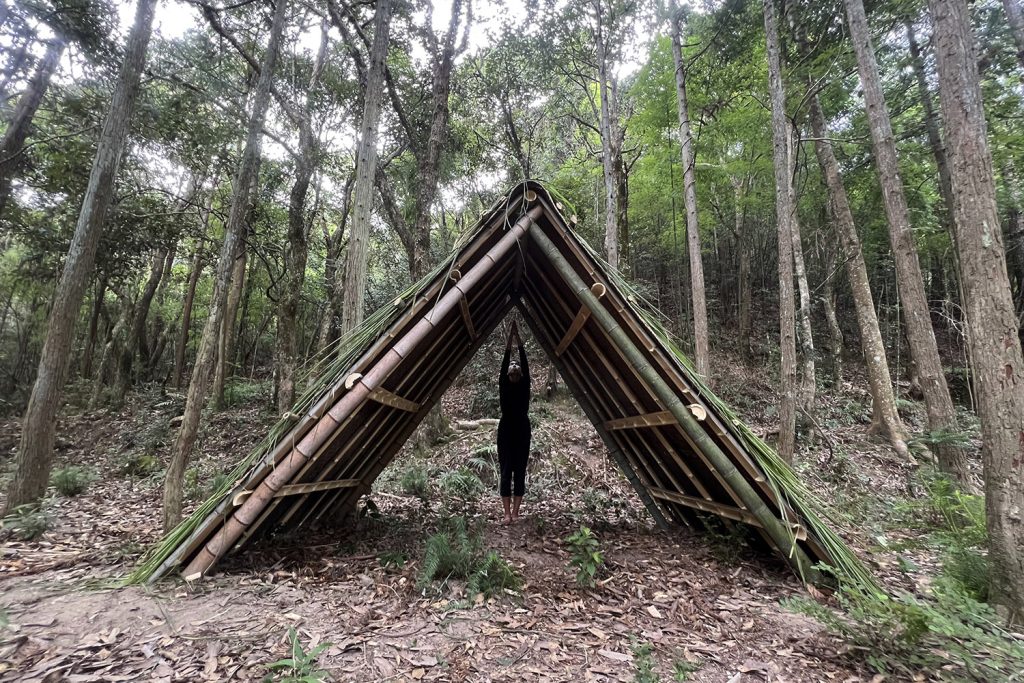
Mountain Number One
Mountain Number Two was built with roof tiles and wood, which are traditionally used by locals for home construction.
“I decided to use roof tiles as the main components because they’re hard-wearing, particularly in humid conditions, and they protect the timber structures underneath,” Kimvi explains.
Proportions of the structure were based on the measurement of Kimvi’s outstretched arms and her height while standing. The measurements were then used in the width and the height of the structure, representing the application of human scale in architecture design.
“The materials for both shelters were purposely chosen for their contrasting qualities to reflect on the ecological system cycle of the forest,” she says.
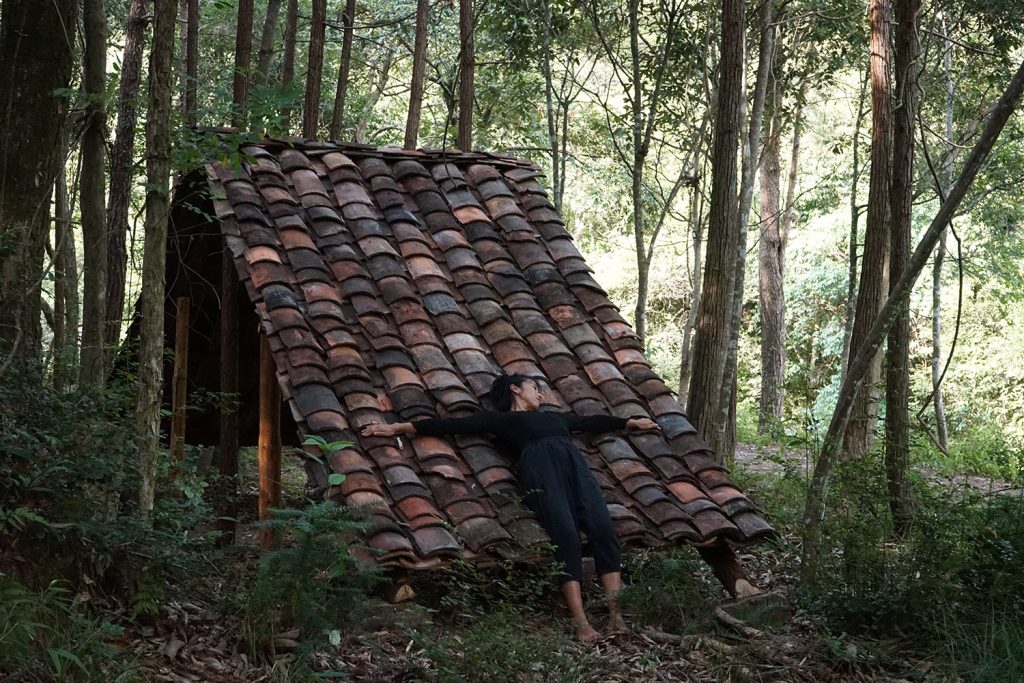
Mountain Number Two
Whereas the above-mentioned two “mountains” are structures resembling the geometric form of mountainous peaks, Mountain Number Three in this project is, in fact, Qingliang Mountain itself which supports the two mountainous structures.
“The third mountain represents the natural surroundings and the coexistence between the village and nature, which is where the charm of rural environment comes from,” Kimvi says.
According to Kimvi, the local villagers were fully involved in the entire artistic process through their traditional craftsmanship. Their contribution was crucial for the structures to be built with an authentic sense of belonging and identity.
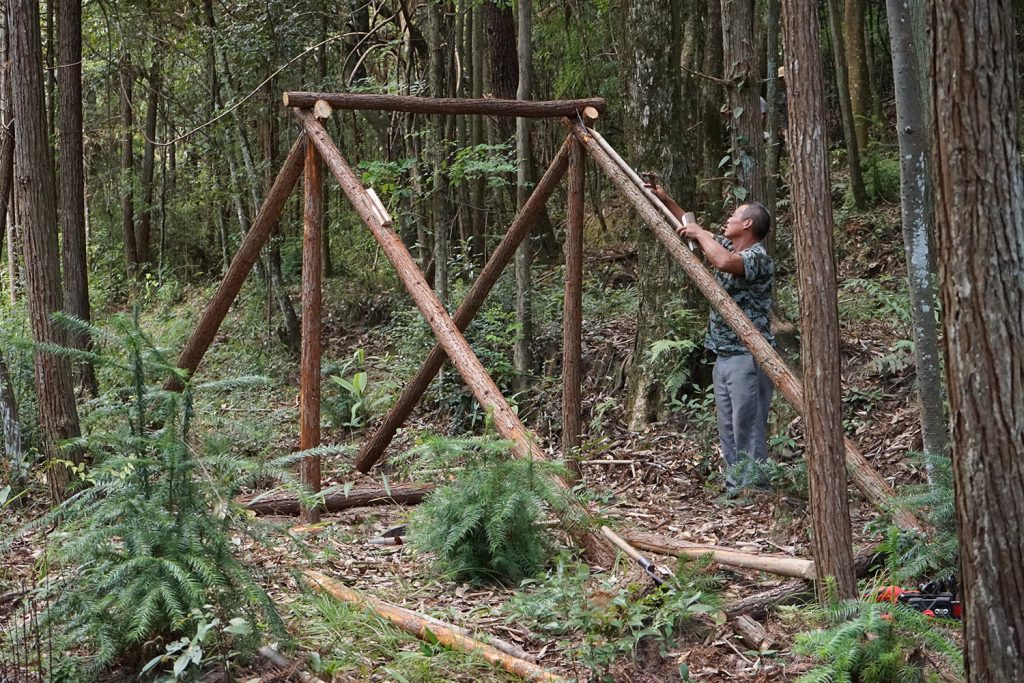
Master Wu Herong using bamboo as measuring stick
“From June to August 2022, I came with the intention of building a cross-cultural bridge between the local villagers, the spaces and ecosystems they inhabit and myself as an artist.
“Living in the village for two months allowed me to relate on a more comfortable and personal level, and to build an understanding of the culture that is specific to the people in that region,” Kimvi says.
By Yi Qian
Edited by Patricia Pieterse
Photos provided by Kimvi Nguyen and Yi Qian



